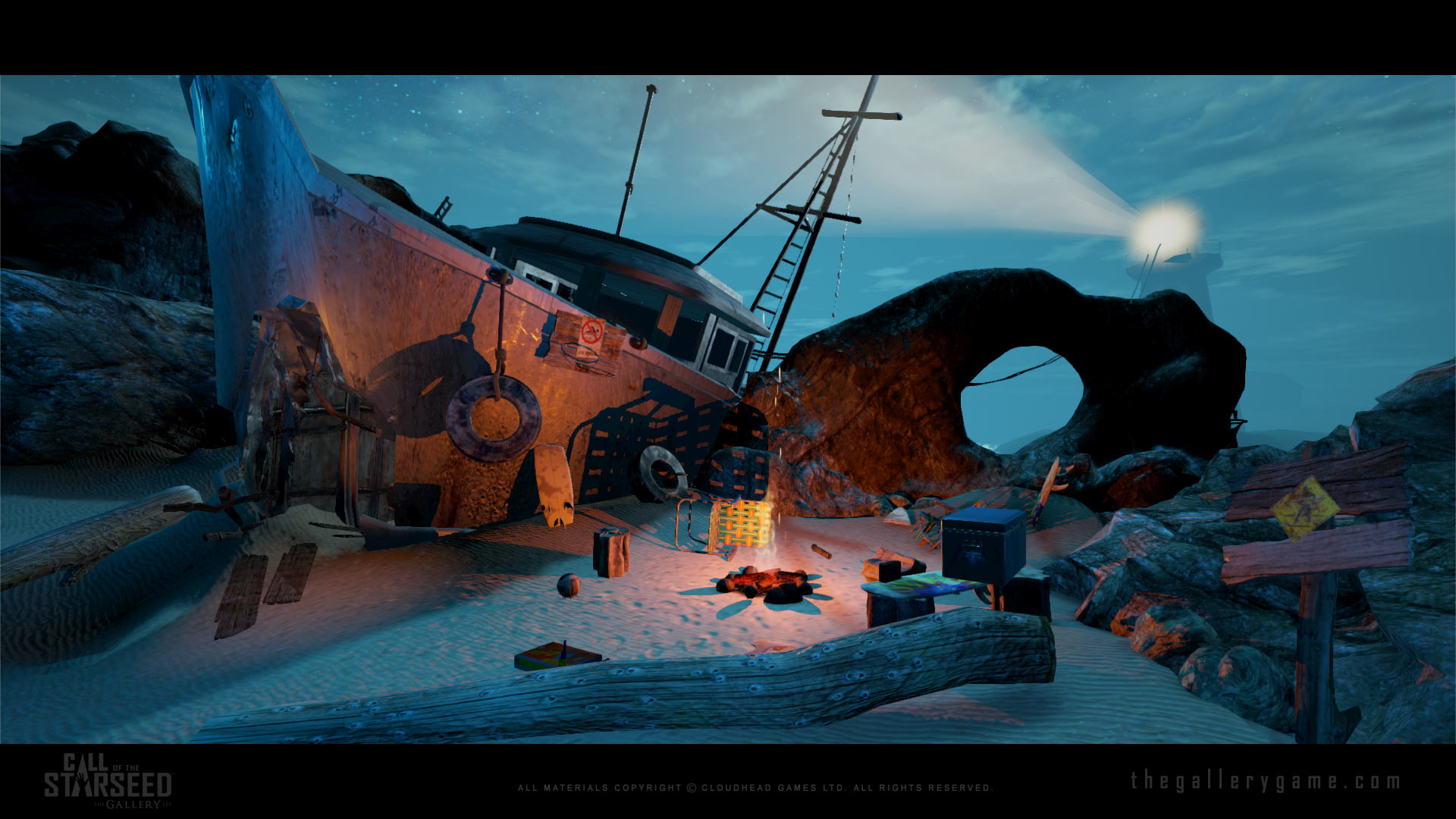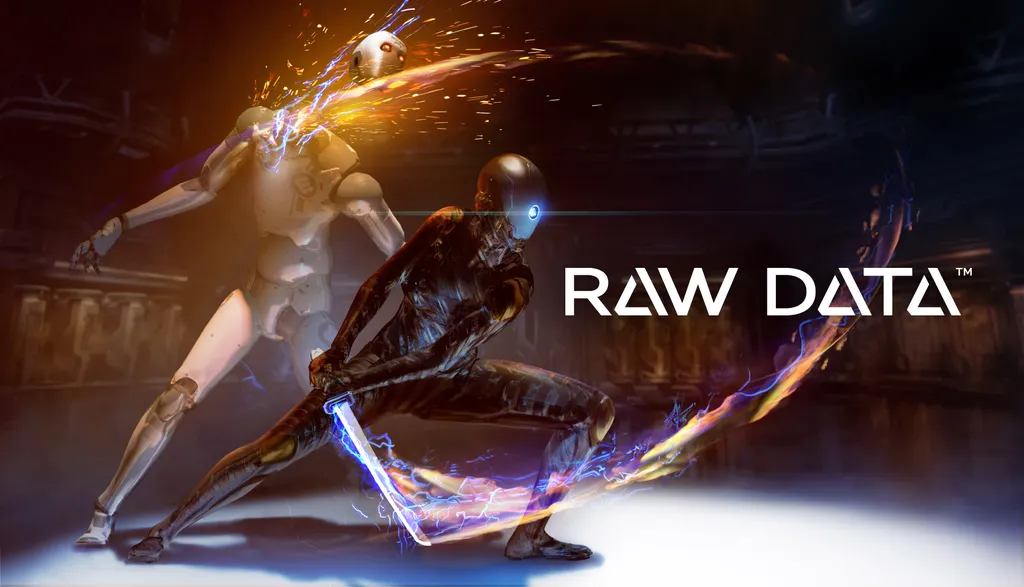Los Angeles-based startup Survios said this week its VR game Raw Data cleared a notable milestone — making more than $1 million in sales during the month of its release.
We contacted Survios after we heard the figure first reported by Fast Company to narrow in a little bit more on what this might signify about the state of the VR market. We also reached out to Canada-based Cloudhead Games and found out they, too, cleared $1 million in sales for The Gallery – Episode 1: Call of The Starseed. Update: We also messaged Space Pirate Trainer creator Dirk Van Welden to see how he’s doing. His game released in April to coincide with the launch of the HTC Vive, and is priced around $15. SPT is a self-funded and extremely addictive wave-based shooter with three people on the team. When I talked to Van Welden in July he thought the $1 million sales figure “will probably be difficult” to achieve in 2016, “but there is a small chance. It all depends on how many headsets will be sold.” By September, he’s sounding much more confident. He now thinks the milestone “is doable this year.”
“A big point here, given the adoption rate of VR, is that the longer you wait to release something, the easier it will be to clear $1M in one month,” Van Welden wrote. “But there will be more competition.”
Episode 1 of The Gallery from Cloudhead was released in April for $30 but switched to being bundled with new Vive headsets in August. Before that switch over happened, however, the company made enough money from sales to fully fund development of the next episode.
“It says that people are willing to pay for a quality experience,” said Denny Unger, Cloudhead’s CEO.
Read More: Hands-on With Raw Data
In the case of Survios, its VR game Raw Data simulates a variety of weapons and abilities against a robot onslaught. It is one of VR’s more active games, requiring players to duck and use different gestures to access weapons. Raw Data debuted on Valve’s Steam store for $40 on July 14 with 10 planned updates to bring the project to “completion.” Now, however, more updates are being planned.
“The vision is definitely expanding…we plan on growing it as long as we can,” said James Iliff, Survios co-founder and chief creative officer. “This is just a start. It’s just a start for us and it’s just a start for the industry. [This datapoint means] there is a business in building premium, more active, deeper, richer experiences and that customers do appreciate that and they do respond by purchasing that.”
The founding team of Survios finds its roots in USC’s Mixed Reality Lab — the same place Palmer Luckey worked before starting Oculus. Survios raised $4 million in 2014, which was announced not long after Mark Zuckerberg agreed to buy Oculus for $2 billion. Since then, Survios has been quiet about funding and Iliff declined to talk about it with me.
Read More: The Gallery Episode 1 Review
Cloudhead’s roots in the VR community go back to the DK1 days of the Oculus Rift — they launched a Kickstarter project back in March 2013 and raised nearly $83,000. Though based in Canada, The Gallery made appearances at early VRLA meetups and connections Cloudhead made early on helped get them access to development hardware needed to be ready for PC-powered VR’s consumer arrival.
What both Survios and Cloudhead have in common is that developers there spent years working out subsystems to their games that are practically invisible to the player but address key problems. Both Raw Data and The Gallery require players to use their hands in VR with natural motions, along with systems in place that allow access to large areas of a virtual world despite players only having a few feet in which to actually move their bodies.
Iliff said the team for Raw Data is around 16 full-time people right now. Unger said there are about 19 people at Cloudhead. Both companies are looking into other projects but don’t want to discuss those just yet.

Raw Data is only available currently on the HTC Vive, though there could be huge potential if they release it on the Oculus store as well. Cloudhead is prepping The Gallery for release on Oculus Touch but Survios hasn’t officially confirmed whether it would fully support the competing Rift headset, or release the game on the Oculus store. Supporting Oculus Touch when it is released in the next few months potentially opens up both games to a much larger audience than just people who purchased a Vive.
“It’s something that’s on the horizon,” Iliff said. “It makes great business sense to be on as many platforms as possible.”
Some developers have chosen to bundle their software with systems and others went with an exclusivity deal which provides the funding to build a game attached to the restriction of developing the project for a single platform. While The Gallery arrived with the Vive headsets in April with a plan to break the game up into several episodes, Survios waited a few months after the headset’s release and put Raw Data on Steam as an in-development “early access” title with a core set of advanced features. Where The Gallery will be sold in installments, Survios went with a higher price up front but outlined a clear plan for buyers of significant add-ons that would bring the project to completion.
“We felt like we wanted the product to have the chance to shine on its own in order to get very clear data,” Iliff said. “Is it something people want?”
With both games pulling in $1 million over such a short span of time — both with the chance to sell to a larger set of VR early adopters heading into the critical holiday season– we’ve got some of the best evidence yet that the developing VR ecosystem might be healthy enough to support small teams building, and selling, high-quality interactive projects.


























